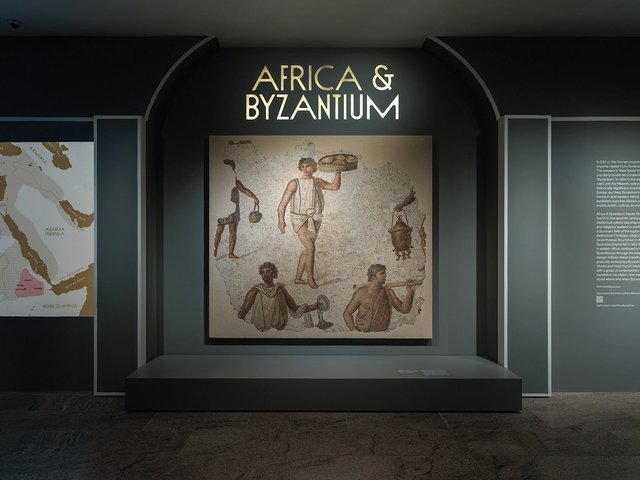London
Byzantium: the name conjures up images of elevated spirituality, majesty and mystery, an art which is refined and precious as well as imbued with lofty intellectuality. And, for a Western audience, subjected to centuries of anti-Byzantine bias, pseudo-mysticism, blindings and back stair intrigue.
Byzantium, long investigated by the scholar, still remains little known or understood by the layman. It is well known that Constantinople was one of the greatest creative centres of world culture; but an infinitesimal fraction of the works of art produced there have survived. This is why any exhibition which helps to widen the frontiers of our knowledge is so important.
The exhibition contains much that is admirable. Ivories, glass and bronzes do not disappoint. The magnificent illuminated manuscripts, so rarely accessible, permit new insights.
But what of icon panels? It was in Byzantium that painting, and especially panel painting, reached a new level of sophistication and indeed became central to the whole perspective of the culture. The British Museum houses the "national" collection of icons. David Buckton, who is responsible for the exhibition, was also instrumental in laying the foundation for the first public collection of icons in a British institution. For this visionary policy he is due enormous gratitude. I believe that it is icons above all which have the immediacy to stimulate public interest as was witnessed by the recent exhibition of Russian icons, "The Gates of Mystery", at the Victoria and Albert Museum.
In the post-war years, a number of exciting Byzantine panels have emerged from obscurity and been reattributed, and our knowledge of icon painting is very much greater than it was, say, in 1958, when Edinburgh held a Byzantine exhibition, an occasion on which little painting was displayed. How is it then that this new exhibition shows us so few icons? Is Britain as poor in Byzantine panel painting as this exhibition suggests?
Surprisingly, while stiff and sterile post-Byzantine examples are well represented (for example, a Cretan icon of John the Baptist which is unaccountably dated as early as the mid-fifteenth century), a late fourteenth-century masterpiece in the holdings of the British Museum, "St George and the Dragon", formerly in the Sinyavsky collection, which should have pride of place, is not exhibited. Of course, this is a Russian icon, but it could not have been more Byzantine in spirit. Russia was an essential part of the Byzantine Orthodox commonwealth. Certainly we can learn far more about the authentic spirit of Byzantium through examining this dynamic and vibrant painting than we can discern in the frozen linear structures of the Cretan St John. And if the St George is to be excluded on grounds of nationality then what are we to say of the Italianate, post-Byzantine panels that are included?
Their presence lessens the impact of what the organisers set out to show the public: the spontaneous creativity of earlier Byzantine masters. They represent a specific and very partial slant of late Byzantine culture - the Latinophone element - which, faced by the encroaching Turk, came to find a natural refuge in Venice and the West, in contrast to those who looked to Orthodox Russia as the only legitimate heir of Byzantium.
There are other questions which need answering. Why did the Ashmolean in Oxford, just sixty miles from London, not lend its celebrated late Byzantine panel "The raising of Lazarus"? Moreover, as anyone familiar with the whereabouts of Byzantine icons in the United Kingdom knows, icons in collections not approached for loans could have transformed the exhibition, outshining many of those included.
Why were these collectors not approached? The answer, in part, is that some of them are also in the art trade. And dealer/collectors are apparently disqualified "a priori" from lending, lest they go on to profit from the "legitimacy" conferred upon their possessions by the public exposure. It leads one to wonder that is the difference between a dealer who may gain from the sale of an object and a private collector who would derive the same benefit.
So, does this "politically correct" policy make sense? In my view the accounts do not balance: any potential profit by the dealer/collectors has been more than offset by the actual loss to the public. Such "Byzantine" calculations have served to diminish the value of an otherwise excellent exhibition.
Consultant on icons and Russian art at Sotheby's, London.
Originally appeared in The Art Newspaper as 'Too byzantine by half'


